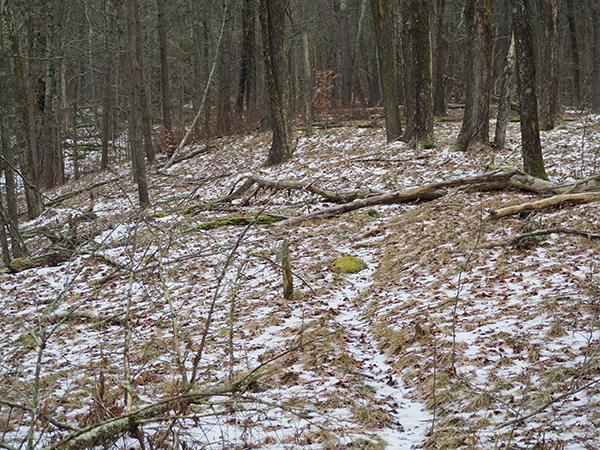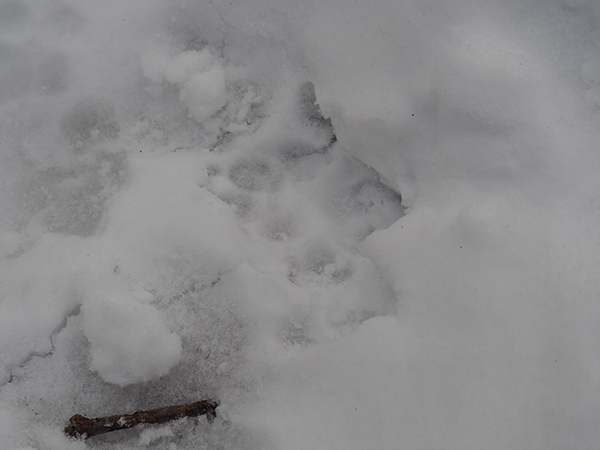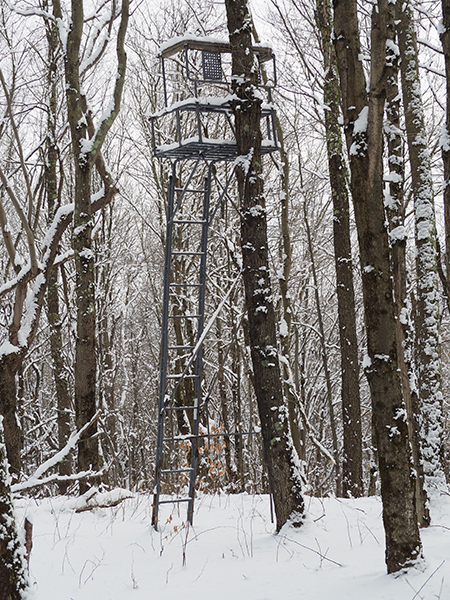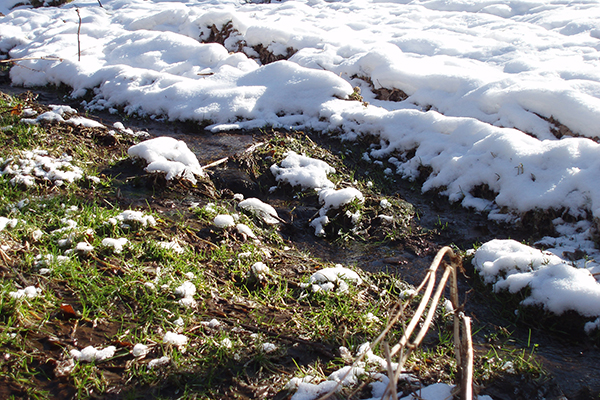Winter is a great time of year to scout for wildlife sign, or to simply take a nature walk. The leaf-off season means you can see long distances in the woods and snow-covered ground serves as a short-term record of wildlife using the area.
When snow is on the ground, one of my favorite pastimes is to follow deer trails around the woods to learn more about where deer like to travel, feed, and bed down. I call it “going on a deer walk”. While I’m mainly focused on deer sign, I almost always find evidence of other wildlife and other people using the woods. For me, deer walks yield much more in return (e.g., physical health, mental focus, understanding/appreciating nature) than the effort required to get to and walk around in the woods. In short, this can be a rewarding activity in any natural setting. Come along and I’ll show you what I mean.
When I get out of the truck, I’m usually walking uphill into the woods. I like to follow well-worn deer trails, or even a single set of fresh tracks in the snow, while looking uphill to see if I jump any bedded deer. Usually, one trail leads to another. I try to follow the trail that looks the most worn.
This deer trail runs parallel to a headwater stream channel.
Sometimes I get sidetracked by other interesting things, like this snag (dead tree) that could provide habitat for a variety of wildlife. Click here to learn more about snags and cavity trees. I can imagine a family of raccoons calling this home.
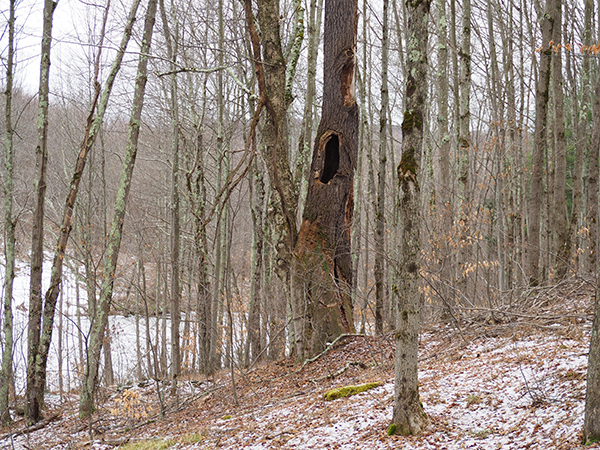
Once, after a fresh snowfall, I followed a beaten down deer trail to a recently windthrown tree. The buds that were once out of reach were now easy pickings for the deer. The frenzy of activity around this fallen tree demonstrated how difficult it must be for deer to find food in the dead of winter.
Ground-level shot of the treetop, with many buds left to be eaten. As I approached, I probably spooked the deer from this new-fallen food source.
Look at the nipped buds. In the background, you can see the tracks, scat, and even a deer hair left behind on one of the branches.
Of course, the deer are just a link in the food chain. On the same day, I found what appeared to be some messy coyote beds. I say messy because the coyote hairs in the beds had chunks of animal fat on them, indicating they had a successful hunt recently.
Coyote hairs with chunks of animal fat on them.
Truthfully, I thought the dark hair might belong to a bear until I saw the distinctive coyote paw print with claws.
Coyote tracks.
In addition to the abundant wildlife sign, it was also apparent that this piece of public land gets a lot of hunting pressure. I found a handful of treestand locations, both old and new.
An old ladder stand. Hunters are supposed to remove their treestands at the end of the season on NYC DEP-owned lands, but many don’t.
Here is an example of a newer ladder stand on public land in the Catskills.
I could see why someone would want a treestand in this location though…
That’s a big buck rub!
Looks like the ol’ buck got away on this one.
A densely covered beaver swamp serves as the gatekeeper for this property. When I visited in January, the beavers were busy felling a few pole-sized red oaks.
This pole-sized red oak will soon be laid over.
Thanks for coming along on this virtual woods walk. Hopefully, it showcased some of the interesting things you can find and learn about just by taking a hike.
Here are some related blogs you may enjoy:
- Post-season Winter Scouting for Deer
- Online Scouting and Map Making with MyWoodlot’s Watershed Mapping Tool
- Installing Trail Cameras for the First Time
- Checking Trail Cameras for the First Time
